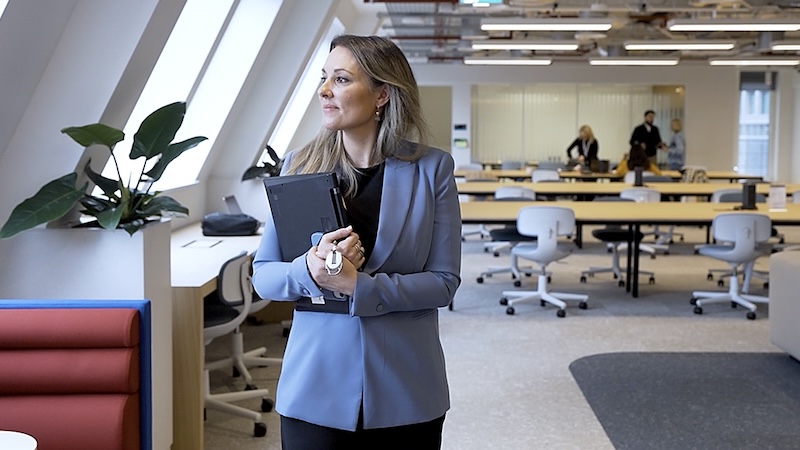The last few decades brought us some of the most iconic office equipment—the kind we see used as props today in every ‘80s movie reboot. There was the personal computer that made its advent in the last 1970s, and fax machines brought us closer together when it gained massive popularity in 1980s businesses.
These days, with the help of smarter devices and equipment, employees are just as comfortable working inside their offices as they are on the road or at home. They can dictate memos to their smart phones or white board plans to colleagues on Webex. With 5G and Wi-fi 6 fast on the horizon, office equipment will not only help us work smarter, it will connect us no matter where we are.
Past and present
The Chicago Tribune hits us with nostalgia by comparing some classic 1990s electronics to their present-day counterparts.
The palm pilot, for example, was a good pre-cursor to today’s virtual assistant. The palm pilot (or PDA) came out in the mid-1990s, working as a tiny computer in your pocket. The palm could keep track of your contacts, notes, and events, making sure the everyday working person was up-to-date on their calendar. Today, virtual assistants are taking over the job. Voice and home assistants are going beyond the calendar and now helping with everyday tasks like locking doors, shutting off lights, and checking off your grocery list.
In 1998, the iMac was the size of a television and it weighed about 40 pounds—today, laptops like the MacBook Pro are thinner and weigh only three pounds so you can take it wherever you need to go. Likewise, stationary phones became smartphones and earmuff-like headphones for the Walkman have become tiny, wireless earbuds.
Even office trends that we’re seeing today can have you thinking that you’re living in the future. 2019 workspace trends include using virtual and augmented reality to get your work done. VR in particular can be an excellent tool to train employees, virtually putting the trainees in any place without actually having them physically there. NPR writes that major chain Walmart is training more than one million employees using the technology, and Verizon has been using VR to train retail workers in handling armed robberies. It’s the aspect of sensory immersion that makes the process so effective.
With so many employees using their own devices, remote working has become the norm. Collaboration technology like Webex is helping workers connect to each other, any place and any time. And Webex is continually coming out with better and newer updates—the collaboration tech now only requires one click to get into your meeting. For first-time users, the installation process is a single and fast install that includes both the pre- and in-meeting experience without any admin rights required.
In addition, the Cisco Contact Center help desk solution has incorporated AI and voice capabilities to its arsenal. With the acquisitions of business intelligence specialist Accompany, customer experience management company CloudCherry, and voice analytics company Voicea, Cisco’s collaboration capabilities have become significantly enhanced. AI and voice assistant tech in Contact Center helps users by offloading repetitive tasks and accessing information in real-time.
Future
What can we expect for the future of the office? 5G and Wi-Fi 6 will help our current technology perform better than ever—Wi-Fi 6 in particular is helping reduce data traffic jams. This means that it can transmit more data across the airways than its predecessors, and it can serve more clients and devices per access point. Even in the most packed offices, co-working spaces, and conferences, you should be able to get a fast and reliable connection.
We could soon be seeing hologram collaboration in the near future as well—this is where augmented reality is really taking the forefront. Mixed reality headsets can be used by individuals to meet with others in the virtual world. In this virtual space, participants may be able to conduct interviews, whiteboard, and even build things together. And for hologram meetings without the headsets? We’ll just have to wait and see.
###
We welcome the re-use, republication, and distribution of "The Network" content. Please credit us with the following information: Used with the permission of http://thenetwork.cisco.com/.




